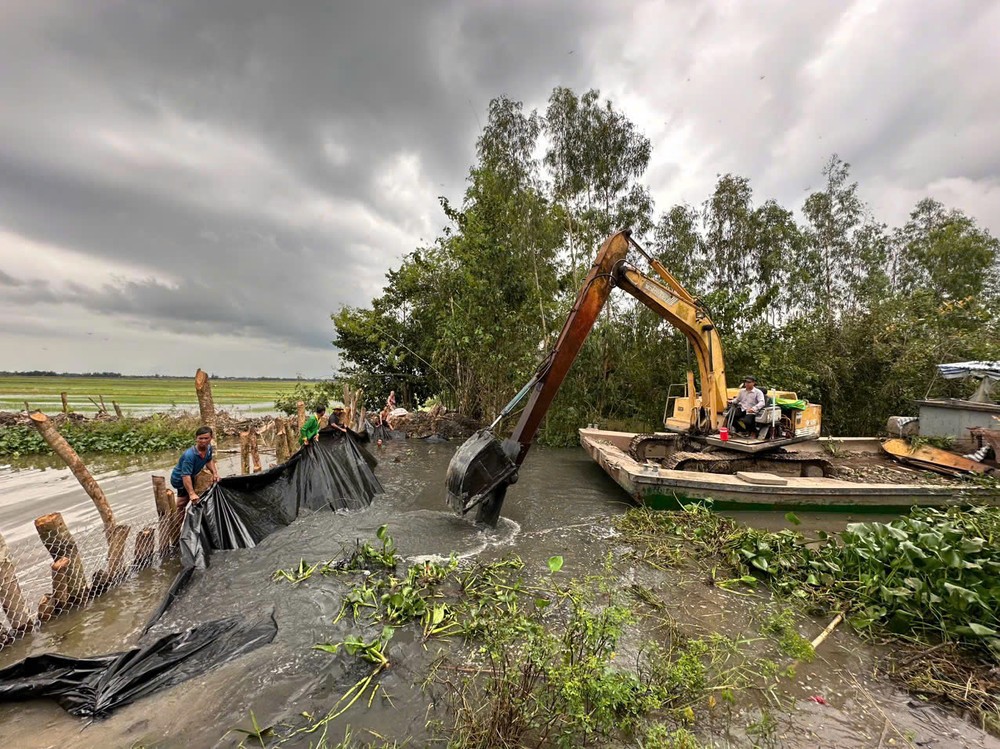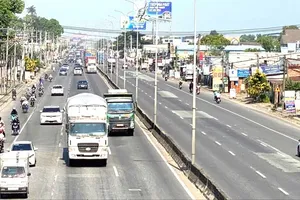
On the evening of October 24, Long An Province's Department of Agriculture and Rural Development reported that widespread heavy rainfall throughout the day, combined with rapidly rising floodwaters, had led to water overflowing embankments and flooding large areas of rice fields, crops, and fruit orchards in the Dong Thap Muoi region, causing severe damage.
In the districts of Moc Hoa, Tan Hung, and Vinh Hung, although full statistics are not yet available, it is estimated that hundreds of hectares of crops, such as watermelon, jackfruit, durian, pumpkin, and bitter melon, have been submerged and damaged.
In addition, three border communes of Kien Tuong Town—Binh Tan, Binh Hiep, and Thanh Tri—have seen 1,340 hectares of autumn-winter and winter-spring rice affected. Over 11,800 hectares of rice fields, crops, and fruit orchards across Long An Province are also at risk of flooding in the coming days.
Local authorities have mobilized military, police, and local militia forces to help residents pump water out of the fields to minimize damage.
In the communes of Vinh Dai and Vinh Loi (Tan Hung District), Thanh Tri (Kien Tuong Town), Binh Thanh (Moc Hoa District), and Bac Hoa (Tan Thanh District), water levels in the canals are currently 1.5 to 2 meters higher than the fields. According to assessments from Long An provincial authorities, certain sections of the dikes are extremely weak, raising concerns about potential breaches that could severely disrupt agricultural production.

In response, Mr. Nguyen Minh Lam, Vice Chairman of the Long An Provincial People's Committee, instructed local authorities in flood-prone areas to focus on reinforcing the embankments. He called on residents to use all available resources to pump water, fortify the embankments, and collaborate with local authorities to mitigate flooding risks.
The Provincial People's Committee has also directed district leaders in the Dong Thap Muoi region to continue guiding relevant departments and commune-level authorities in closely monitoring floodwater levels and high tides.
Additionally, regular patrols and inspections of low, weak, or incomplete dike sections are essential. They were urged to prepare fully under the "four on-the-spot" strategy, particularly in mobilizing mechanical equipment, to ensure a timely response to rapid flood increases that could threaten the safety of the dikes to safeguarding agricultural production areas amid the ongoing heavy rains, rising floods, and high tides.
























